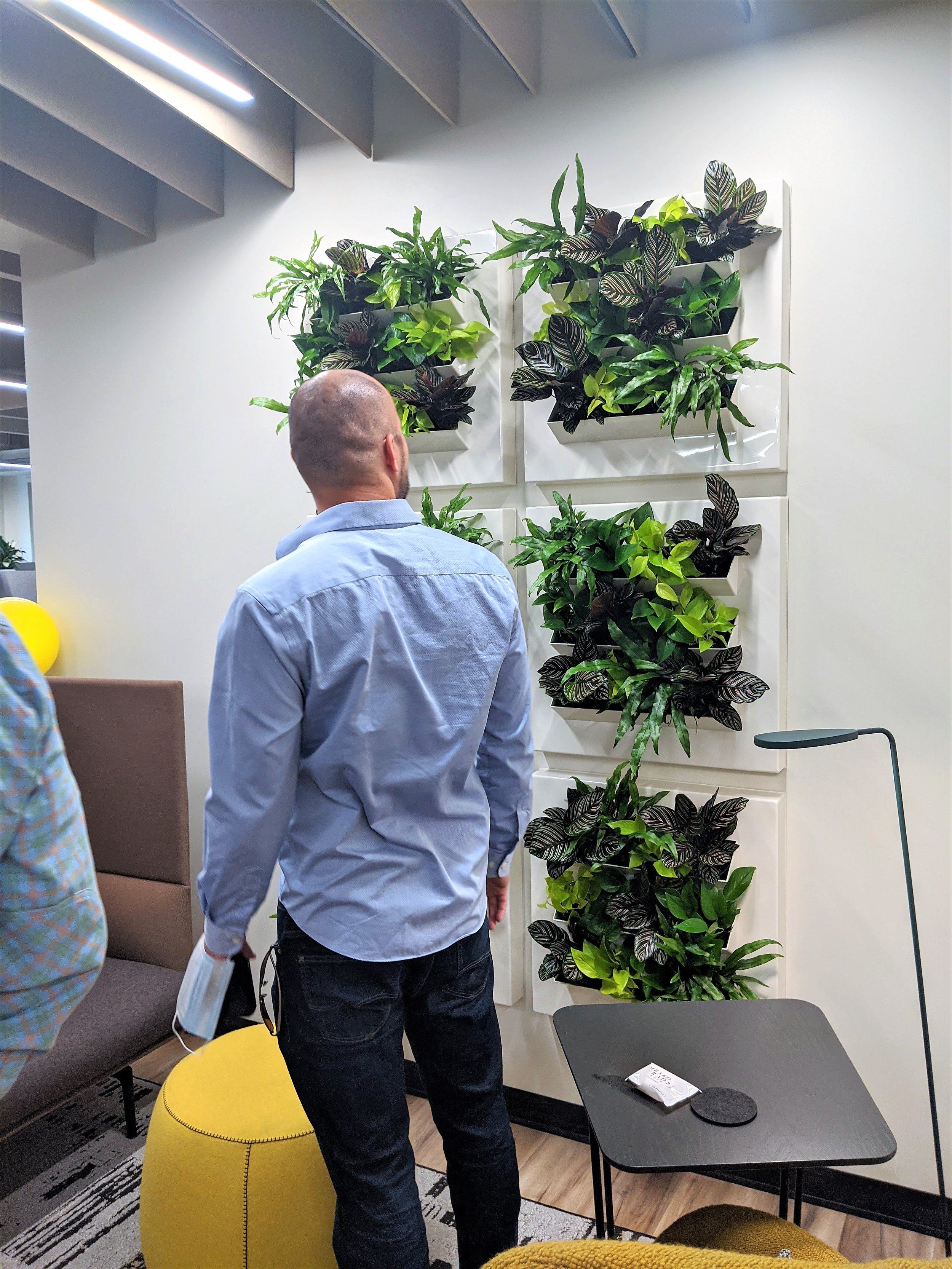How Plants Transform 3 Types of Workspaces
What is the secret to happier, more productive employees?
The answer might surprise you. Office design that incorporates plants has a significant role in employee satisfaction. Each area–Shared Spaces, Assigned Spaces, and Meeting Spaces–presents an opportunity to use plants that align with the room’s purpose.
We all know healthy, beautiful plants bring life to the indoors, but studies also confirm they improve air quality, boost employee well-being, and decrease absenteeism by 60%. (1) Let’s explore how plants can transform various office zones into vibrant workspaces that will increase your company’s productivity and your employee’s happiness.
Shared spaces
Shared spaces encourage flexible, spontaneous, and often temporary connections. These spaces include collaboration areas, lounges, breakrooms, lobbies, overflow (breakout) zones, and recreational spaces. This type of environment balances creative thinking and relaxation.
“Indoor plants improve air quality, boost employee well-being, and decrease absenteeism by 60%.”
Studies show plants lower cortisol–the stress hormone–as well as boost creativity, making them an ideal feature in every shared space.(2)
Try These Plant Ideas:
Make a visual impact in a lobby or lounge with trees or tall plants, for a welcoming environment.
Spark innovation in collaboration and overflow areas with a custom living plant wall in view of the entire shared space.
Define boundaries and social zones with a series of planters. Grouping floor plants will allow smaller gatherings to occur naturally.
Assigned Spaces
Assigned spaces cultivate individual productivity and are often more personalized, providing environmental comforts for independent goals. Cubicles, workstations, arranged desks, and private offices are all encompassed in Assigned Spaces.
The aim of assigned spaces is to encourage focused attention, as well as promote a sense of ownership within the company at large. Using plants as part of biophilic design provides a way to personalize a space, add comfort to a setting, and act as natural stress reducers that increase an employee’s productivity.(3)
Try These Plant Ideas:
In offices or workstations with plenty of natural light, tall floor plants thrive and enhance the visual design, while improving worker’s well-being.
For open cubicle layouts, a living wall above the sight line of partitions is an effective stress reducer. Plant-filled walls offer a soothing break for tired eyes from computer screens.
Tabletop plants on a desk soften the workspace while elevating an employee’s mood.
Meeting Spaces:
Conference rooms are not the only meeting space within the modern office. The rise of flex rooms and hybrid team rooms join the list of meeting spaces, which often require an atmosphere conducive to presentations and strategizing.
“Living walls offer a soothing break for tired eyes from computer screens.”
These environments are professional-minded and should ignite creative problem-solving, with communication at the forefront. Privacy and acoustics are integral to all meeting spaces.
Try These Plant Ideas:
A row of plant containers by windows–either large floor plants or countertop containers on a ledge–act as a natural privacy screen.
To set an executive tone, add blooming bowls with colorful plants that are changed every season. Keep the arrangements low, to accommodate conversations across a conference table.
A presentation monitor flanked by tall plants or surrounded by a living wall is not only eye-catching, it absorbs distracting noise.
“…integrating greenery into work environments is a powerful step towards productive, beautiful spaces.”
Plants transform workspaces into healthier, more functional environments while boosting aesthetics and employee well-being. If the thought of choosing plants or keeping them healthy and long-lasting is daunting, partner with plant professionals for design and maintenance. Whether through large statement plants, desk plants, or living walls, integrating greenery into work environments is a powerful step towards productive, beautiful spaces.
Written by: Terri Bonstrom, Horticulturist
References:










